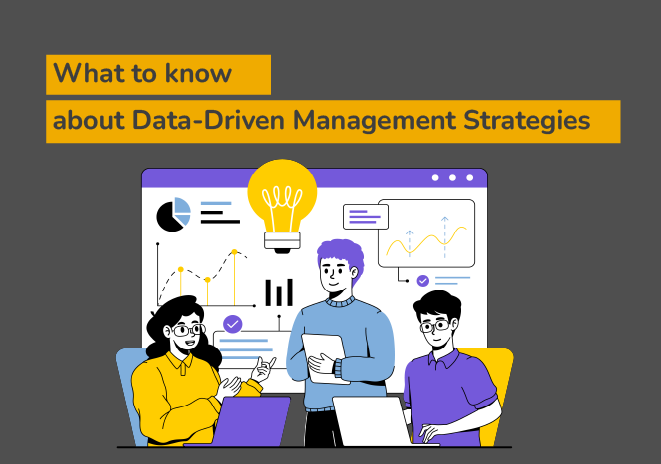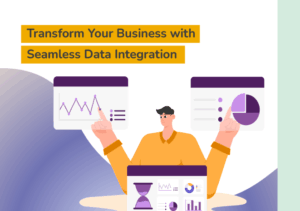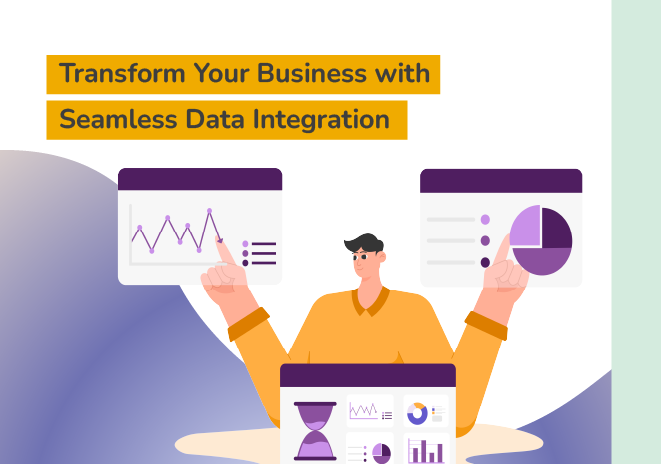What is data-driven management?
Data-driven management refers to a strategic approach that emphasizes the use of data in making informed business decisions. In today’s fast-paced business environment, companies rely heavily on data to guide their operations and strategy. This method is crucial as it helps businesses remain competitive, optimize processes, and respond swiftly to market changes. By leveraging data insights, organizations can enhance efficiency, improve customer satisfaction, and achieve greater profitability. Ultimately, data-driven management is about cultivating a data-centric culture where decisions are grounded in factual, quantitative insights rather than intuition or assumptions.
Key Takeaways
- Data-driven management is essential for making informed business decisions using quantitative insights.
- A data-centric approach enhances market responsiveness, customer experience, and fosters innovation.
- Leveraging data insights enables businesses to improve efficiency and adapt swiftly to market fluctuations.
- Successful companies use data-driven strategies to gain a competitive edge and innovate consistently.
- Data collection, analysis, and technology integration are key components of effective data-driven management.
- Challenges such as data privacy, integration, and quality maintenance must be addressed for successful implementation.
- Examples of leading companies demonstrate the transformative potential of data-driven strategies in various industries.
Definition of data-driven management
Data-driven management involves leveraging accurate and relevant data to guide business decisions. This approach ensures that decisions are backed by empirical evidence rather than intuition or guesswork, making it highly valuable in modern business environments. By utilizing data-driven strategies, businesses can identify trends, predict outcomes, and customize services, leading to improved efficiency, increased performance, and informed growth strategies. Data-driven management creates a culture of transparency and accountability, as decisions can be tracked and verified. Emphasizing the importance of data-driven management enables organizations to remain competitive and adaptable in rapidly changing markets, ultimately fostering innovation and strategic success.
Importance in modern business environments
In today’s dynamic and competitive landscape, data-driven management has become crucial for achieving sustainability and success. The importance of adopting a data-centric approach lies not only in the ability to optimize operations but also in fostering innovation and driving productivity. By leveraging data, businesses can unlock actionable insights, leading to strategically sound decisions that enhance market responsiveness and customer experience. This ensures that organizations remain relevant in an ever-evolving marketplace, seamlessly adapting to emerging trends. Thus, integrating data-driven management strategies is integral to maintaining a competitive edge and achieving long-term growth.
Why are data-driven management strategies important?
In today’s fast-paced business climate, data-driven management strategies are pivotal for success. These strategies leverage actionable insights from data to enhance decision-making, directly impacting business performance and fostering growth. Employing data allows companies to identify trends, optimize operations, and predict future demands with precision.
Data-driven decisions reduce risks, improve efficiency, and empower organizations to adapt swiftly to market fluctuations. Businesses capitalizing on big data gain a competitive edge, effectively positioning themselves as leaders in their industries. Emphasizing data-centric approaches enables organizations to innovate consistently and drive sustainable growth.
Benefits of using data in decision-making
Data-driven management strategies offer a myriad of benefits for modern businesses, with data-centric decision-making at the helm. Leveraging data leads to informed decisions, which can enhance operational efficiency and increase revenue. By analyzing trends and patterns, organizations can predict market changes, tailor products to customer needs, and streamline processes. Additionally, data helps in identifying potential risks and opportunities, fostering a culture of innovation and adaptability. The adoption of data-driven strategies not only boosts business performance, but also ensures sustained growth in a competitive landscape.
Impact on business performance and growth
Data-driven management strategies are pivotal in enhancing business performance and growth. By leveraging accurate data and insights, companies can make informed decisions that lead to improved efficiency, reduced operational costs, and increased profitability. Data insights enable businesses to swiftly adapt to market changes and customer demands, thereby gaining a competitive edge. Furthermore, data-driven strategies facilitate a proactive approach to managing risks and identifying new opportunities, promoting sustainable growth. Organizations that embrace these strategies often experience heightened innovation and are better equipped to scale their operations efficiently.
How do data-driven management strategies work?
Data-driven management strategies are pivotal in steering modern businesses towards success. By leveraging key components such as
data collection,
analysis, and
interpretation, companies can transform raw data into actionable insights.
Technology and
data analytics serve as the backbone, enabling organizations to glean valuable information swiftly and accurately. This approach fosters informed decision-making, driving both operational efficiency and innovation. By embracing these strategies, businesses can position themselves competitively, turning potential challenges into opportunities for growth. Furthermore, data-driven strategies refine marketing, optimize supply chains, and enhance customer experiences, epitomizing the versatile applications across industries.
Key components of data-driven management
Data-driven management revolves around leveraging data in decision-making to optimize business operations and growth. At its core, it hinges on several key components:
data collection, which involves gathering comprehensive and relevant data;
data analysis, where insights are extracted using advanced analytics techniques; and
technology implementation, utilizing software and platforms to streamline processes. Together, these elements create a framework that guides strategic decisions based on empirical evidence rather than intuition. Effective data-driven management integrates these components, fostering an environment where data is pivotal in improving efficiency and forecasting future trends.
Role of technology and data analytics
In the realm of data-driven management, the integration of cutting-edge technology and data analytics plays a pivotal role. These elements together transform raw data into actionable insights, empowering businesses to make informed decisions and enhance efficiency. By leveraging advanced analytical tools, organizations can uncover hidden patterns, anticipate market trends, and drive strategic initiatives. This synergy between technology and analytics not only streamlines operations but also fuels innovation and competitiveness in the ever-evolving business landscape. Mastering this dynamic interplay is crucial for any organization aiming to thrive in today’s data-centric world.
What are the essential tools for implementing data-driven strategies?
Data-driven strategies can transform a business, but successful implementation often hinges on choosing the right tools. Essential for this are robust
software platforms that facilitate data collection, integration, and analysis. Tools like data
analytics platforms and
visualization software help decode complex data sets and present actionable insights. Key technologies include
cloud-based services for scalability and
machine learning models for predictive analytics. By leveraging these tools, companies can enhance their ability to
make informed decisions, drive
innovation, and gain a competitive edge in today’s data-centric marketplace.
Software tools and platforms
In the realm of data-driven management strategies, selecting the right software tools and platforms is pivotal. These technological solutions enable businesses to gather, analyze, and interpret data effectively, driving informed decision-making and propelling growth. Leading software platforms offer capabilities that range from
advanced data analytics to
intuitive visualization tools, streamlining the process of transforming raw data into actionable insights. Such tools foster a competitive advantage by delivering real-time data processing, scalable architectures, and seamless integrations, making them indispensable assets in today’s information-centric business landscape.
Data analytics and visualization tools
Data analytics and visualization tools are pivotal in transforming raw data into actionable insights, fostering informed decision-making crucial for business success. These
tools allow organizations to analyze large datasets quickly, identify patterns, and forecast future trends with precision.
Visualization tools help present complex data in an easily digestible manner, enhancing comprehension and facilitating strategic planning. Key tools include business intelligence software, which integrates data from various sources, and data visualization platforms that offer dynamic dashboards. Leveraging these technologies, businesses can drive efficiencies, remain competitive, and effectively respond to market demands.
What challenges do businesses face with data-driven management?
Businesses venturing into
data-driven management often encounter several challenges. A primary concern is ensuring data
privacy and security, as handling large volumes of sensitive information poses risks. Companies may also face difficulties with
data integration, requiring seamless merging of data from various sources. Another challenge is the lack of
skilled personnel who can effectively interpret and utilize data insights. Additionally, maintaining
data quality is crucial, as incorrect or outdated data can lead to misguided decisions. Addressing these challenges necessitates adopting comprehensive security measures, investing in proper training for staff, and implementing robust data management systems.
- Data Privacy and Security
- Challenges with Integration
- Need for Skilled Personnel
- Data Quality Maintenance
Common pitfalls and solutions
Adopting data-driven management strategies can greatly enhance a business’s performance and competitiveness. However, businesses often encounter several challenges during this transformation. Common pitfalls include data silos, insufficient data quality, and a lack of analytical skills within teams. These obstacles can hinder effective decision-making and the overall success of data-driven initiatives. Solutions involve fostering a culture of data literacy, encouraging cross-functional collaboration, and investing in reliable data integration tools. By addressing these challenges, companies can leverage data more effectively, driving improved strategic decisions and sustained growth.
- Data silos hinder decision-making
- Poor data quality affects results
- Lack of analytical skills
- Cross-functional collaboration is essential
- Invest in reliable tools for success
Issues with data privacy and security
Navigating data privacy and security issues is crucial in the realm of data-driven management strategies. Protecting sensitive information is a primary concern, as businesses collect and analyze vast amounts of data. Challenges include compliance with stringent data protection regulations and safeguarding against potential data breaches. Employing robust security measures, such as data encryption and access controls, alongside ensuring transparency with stakeholders, can mitigate these risks. Striking a balance between leveraging data insights and maintaining privacy is vital for businesses aiming to harness the power of data-driven approaches without compromising on trust and security.
How can companies successfully implement data-driven strategies?
Implementing data-driven strategies requires a systematic approach to transform raw data into actionable insights. Companies must first establish a
data-centric culture, emphasizing collaboration between data teams and decision-makers. Identifying
specific goals and key metrics ensures alignment with business objectives. Investing in the right
technology, including analytics platforms and data visualization tools, is crucial for efficient data processing. Regularly training staff to leverage these tools fosters a
data-driven mindset. It’s essential to start with smaller projects, allowing for iterative learning and adaptation. Continuously monitoring the
results and making necessary adjustments can enhance strategy effectiveness over time, ensuring sustainable growth.
Steps for integrating data-driven approaches
Integrating
data-driven approaches into your organization involves several strategic steps to ensure seamless transition and optimal results. Start by establishing a clear
vision for what you aim to achieve with data insights. Next, invest in suitable
technology and
analytics tools that align with your business needs. Training staff to be data-literate ensures they can interpret and leverage insights effectively. Additionally, fostering a
data-centric culture encourages innovation and continuous improvement. It’s crucial to establish
data governance to manage accuracy and security. By following these steps, companies can harness the full potential of data-driven management.
Best practices for transformation
Adopting data-driven management strategies requires a deliberate approach to ensure successful transformation. Companies should begin by establishing a clear
vision aligned with their business objectives. Developing a culture rooted in data is vital, where every stakeholder embraces the use of analytics in decision-making. Implementing
training sessions and promoting skills in data handling and interpretation empowers employees to contribute effectively to data initiatives. Regularly monitoring performance and adapting strategies to respond to insights can drive continuous improvement. By fostering collaboration between data experts and decision-makers, businesses can harness the full potential of data-driven strategies for sustained growth and innovation.
What are examples of successful data-driven management strategies?
Successful data-driven management strategies markedly transform businesses, propelling them toward heightened efficiency and profitability. For example, Amazon leverages advanced data analytics to optimize supply chain operations, enabling swift delivery and enhanced customer satisfaction. Similarly, Netflix utilizes data-driven insights to personalize content recommendations, significantly boosting viewer engagement. Walmart employs massive data sets to anticipate market trends, manage inventory efficiently, and drive competitive pricing strategies. These examples illustrate the power of data in crafting strategies that align with user preferences, ensuring sustained growth and innovative solutions across industries. By harnessing data’s potential, companies can build resilient structures that adapt to ever-evolving market landscapes.
| Company |
Key Strategy |
| Amazon |
Supply Chain Optimization |
| Netflix |
Personalized Content |
| Walmart |
Market Trend Anticipation |
Case studies of successful companies
In the realm of modern business, adopting
data-driven management strategies can transform company dynamics and drive
success. Several organizations have pioneered this approach, harnessing the power of data to
enhance decision-making and optimize performance. By examining
case studies of successful companies, businesses can glean insights into effective
data utilization to achieve growth objectives. These companies illustrate the critical role data plays in shaping competitive advantages, streamlining
operations, and unlocking new avenues for innovation. Understanding these
success stories provides valuable lessons for businesses aiming to embrace a data-centric culture and bolster their strategic efforts.
„Organizations that succeed with data-driven strategies often display a strong commitment to innovation, continuous learning, and robust data analytics competencies.“
Lessons learned from industry leaders
Learning from industry leaders reveals invaluable insights for companies aspiring to harness the power of
data-driven management strategies. Successful organizations like Amazon, Google, and Netflix demonstrate how effectively leveraging data can enhance decision-making processes and drive
business growth. These companies have embraced a culture of data analytics, which informs all levels of their strategy, from product development to customer service. By implementing stringent data analytics frameworks, they have gained a competitive edge, showcasing the transformative potential of utilizing data effectively. Emulating these practices can significantly improve an organization’s efficiency and market position.
FAQ
What is data-driven management?
Data-driven management refers to a strategic approach that emphasizes the use of data in making informed business decisions, enhancing competitiveness and optimizing processes.
Why is data-driven management important in modern business environments?
Data-driven management is crucial because it enables organizations to remain competitive, adapt to market changes, and drive innovation and productivity.
What are the primary benefits of using data in decision-making?
The primary benefits include informed decisions, enhanced operational efficiency, increased revenue, identification of potential risks, and fostering a culture of innovation.
What key components are fundamental to data-driven management?
Key components include data collection, data analysis, and technology implementation which together guide strategic decisions based on empirical evidence.
How do technology and data analytics support data-driven management?
Technology and data analytics transform raw data into actionable insights, streamlining operations and fueling innovation and competitiveness.
What challenges do businesses face with data-driven management?
Challenges include ensuring data privacy and security, data integration issues, the need for skilled personnel, and maintaining data quality.
What steps should companies take to implement data-driven strategies successfully?
Companies should establish a data-centric culture, invest in suitable technology, regularly train staff, and start with small projects for iterative learning.
Can you give examples of successful data-driven management strategies?
Examples include Amazon’s supply chain optimization, Netflix’s personalized content recommendations, and Walmart’s market trend anticipation.









